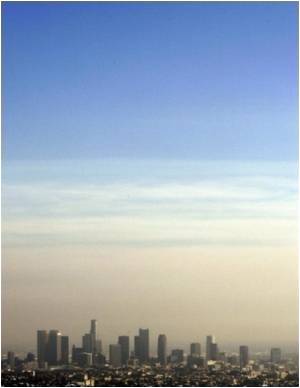There is more to the sizzling heat than rising temperatures in Delhi. Uunusually high levels of toxic ozone in the city in the past two weeks were found by scientists.

"Delhi's air is known to get polluted mainly due to the rise in particulate matters which can be felt when visibility becomes poor on extreme days," Gufran Beig of Pune's Indian Institute of Tropical Meteorology (IITM) told IANS.
"But it is for the first time in the last three years (since pollution levels are being studied) that invisible gaseous pollutant ozone is playing havoc," said Beig, who is programme director of SAFAR, a system put in place during the Commonwealth Games in New Delhi.
SAFAR or System of Air quality and Forecasting and Research network is meant to keep a tab on pollution levels in the city.
"During the past two weeks, on account of continuous record rise in temperatures in Delhi and uninterrupted non-cloudy sunshine, the ozone level has increased," Beig said over telephone.
He warned that ozone pollution was likely to increase further.
Advertisement
Beig said breathing elevated ozone can trigger a variety of health problems including chest pain, coughing, throat irritation and congestion.
Advertisement
Sunil Peshin, in-charge of SAFAR, said pollution along with strong sunshine produces ozone at the ground level.
"Ozone is emitted by a range of human activities including transportation. If current extreme weather condition prevailed for longer time, it can increase toxic ozone production," said Peshin.
Source-IANS








